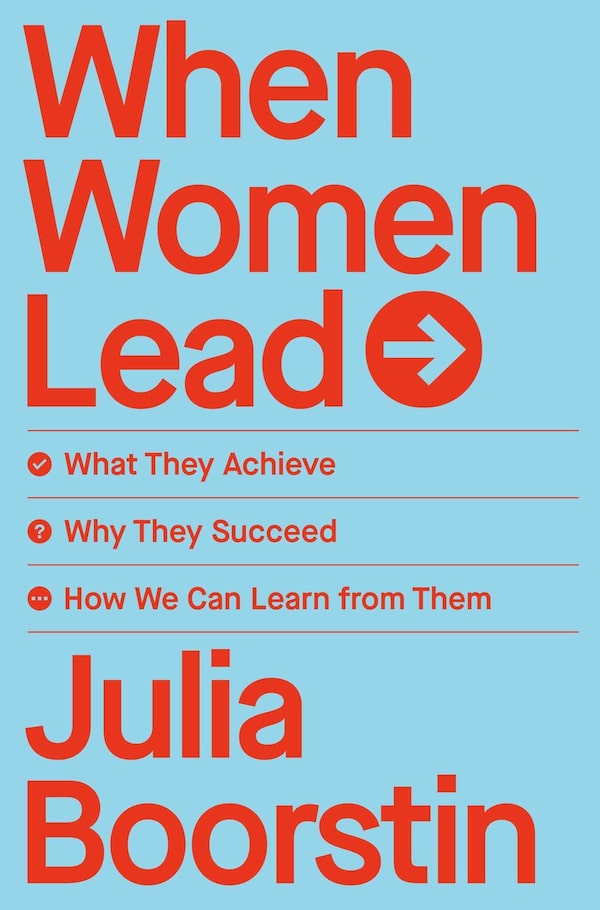
Purpose, adaptability and preparedness are key to navigating teams through challenging times.Anchiy
In 2023, the continued impacts of hybrid work amid economic uncertainty and slowdowns in key sectors like tech have left business leaders navigating uncharted waters and seeking ways to thrive during an extraordinary time.
Three new books on leadership by prominent women aim to help leaders meet the challenge:
Intentional Leadership: The Big 8 Capabilities Setting Leaders Apart, Rose M. Patten
(University of Toronto Press, 232 pages)

Leaders can’t just do things the way they’ve always been done, Rose Patten says.
“We tend to rely more on instinct… the tried and true,” says Ms. Patten, chancellor of the University of Toronto and adjunct professor at the university’s Rotman School of Management. “But some renewal of leadership is needed. Leadership is not timeless and what got us here won’t keep us here.”
Ms. Patten, who is also a special advisor to the CEO and senior executives at BMO Financial Group, draws on her own decades of C-suite experiences as well as case studies of 10 other successful leaders in this book.
Over the course of teaching leadership at Rotman for the past eight years to more than 1,000 people in all sectors, Ms. Patten has honed a list of eight key capabilities that make for strong, intentional leadership as organizations of all kinds face external and internal disruption.
The eight skills in the book are universal keys to leadership that apply to the private and public sector, non-profit and academia, says Ms. Patten, who served for a time as the chair of the board of trustees of The Hospital for Sick Children and was appointed in 2017 an Officer of the Order of Canada.
“If I had to single out one capability throughout my career, the one I would single out is to be adaptable,” she says. “I think that no matter what you do in life, that’s fundamental.”
Other key skills include empathy, collaboration and developing other leaders. While some may think the main goal of leadership is to deliver a company’s desired outcomes, Ms. Patten sees a need to always consider the human side of leading.
“I define leadership at its heart, its essence, as having a positive impact on others,” she says. “In everything we do we have those situations where our impact on others is really important, maybe more important than our title.”
When Women Lead: What They Achieve, Why They Succeed, and How We Can Learn From Them, Julia Boorstin
(Simon & Schuster, 432 pages)

As CNBC’s senior media and technology reporter and a business reporter for more than two decades, Julia Boorstin has come across many impressive female leaders.
Yet just 8.5 per cent of Fortune 500 CEOs are women, and last year, just two per cent of all venture capital dollars in the U.S. went to female founders, she points out.
“Even though women were getting such little access to capital, the ones who did manage to succeed and who did manage to run companies, either big companies or small companies, were incredibly impressive,” she says.
Ms. Boorstin interviewed 120 people, of which about 60 women are quoted in the book, and reviewed hundreds of academic papers to find the skills and strategies they were deploying that made them so successful.
“I wanted to really understand how those women had managed to defy those odds and what we can learn from them,” says Ms. Boorstin, creator of CNBC’s Disruptor 50 list.
Some of the common threads she found and explores in the book include humility, a growth mindset, authenticity, empathy and a willingness to take a communal approach to problem-solving.
“It was really interesting to find that as these characteristics emerged in my interviews, I found a wealth of research to explain why it is that women are more likely to lead this way and also why we should all be leading this way, both male and female,” she says.
Some of the success stories profiled in the book include Bumble CEO Whitney Wolfe Herd, actress and producer Lena Waithe, Tala CEO Shivani Siroya and Planet FWD founder Julia Collins.
One common thread was purpose-driven leadership, Ms. Boorstin says. Many interviewees said that by focusing on a company’s potential to make positive change in the world, entrepreneurs are able to find sources of inspiration and determination when times are tough.
“I think it’s time to change the conversation about what leadership looks like,” she says. “I want everyone to be able to identify their own leadership superpowers and understand how they can be more successful by being more true to themselves.”
The Prepared Leader: Emerge From Any Crisis More Resilient Than Before, Erika H. James and Lynn Perry Wooten
(Wharton School Press, 152 pages)

Lynn Perry Wooten, president of Simmons University in Boston, and Erika H. James, dean of the Wharton School of the University of Pennsylvania, began writing the update of this book before the COVID-19 pandemic upended the world.
Suddenly, their topic was more relevant than ever.
“Most leaders think about the three Ps: people, profit and the planet,” says Ms. Wooten, who has studied crisis leadership for 25 years. “But a fourth skill you need is to be a prepared leader. There’s always that next crisis around the corner.”
Drawing on recent scenarios, including the pandemic and ensuing shutdowns around the world, Ms. Wooten and Ms. James provide a framework for how leaders can prepare for crisis.
There are five phases to any crisis, says Ms. Wooten, from preparation and prevention to leading through the crisis, then recovery and, finally, learning and reflection.
While it might seem like impossible to predict the unpredictable, “you can develop mental competency to lead in a crisis situation,” she says.
To be ready, you need the three C’s, says Ms. Wooten: communication, competency and confidence. The book includes tools and takeaways, as well as assessments and exercises on the accompanying website to help leaders strategize for each phase of crisis.
It’s essential to build the right team before a crisis happens and empower team members to respond and adapt to situations, she adds.
“With a crisis situation, your expertise and experience matter, but the team has to come together,” she says.
Leaders need to be willing to forget hierarchies when necessary. “At some point, people have to throw off their titles and everybody has to work together.”

Interested in more perspectives about women in the workplace? Find all stories on the The Globe Women’s Collective hub here, and subscribe to the new Women and Work newsletter here. Have feedback? Email us at GWC@globeandmail.com.